You’ve probably heard that mixing certain household substances, particularly cleaning solutions, can have serious toxic results. If you have a selection of cleaning substances on hand, you may be wondering if combining a couple of them will create a more powerful solution that can take out tough stains or more thoroughly disinfect the problem areas that you are dealing with.
Before combining any two cleaning substances, it is very important to identify what they contain, to ensure that it’s safe to use them together. This is also true if you’re planning to use one cleaning product right after another on the same surface, without thoroughly rinsing the surface in between the use of each product.
So, can you mix Pine-Sol and bleach? The short answer is yes, you can, but you probably shouldn’t, unless you want a physically painful and potentially toxic experience. In this guide, we will explore the composition of Pine-Sol and bleach. We will let you know all the dangers of mixing bleach and Pine-Sol, and we will advise on the use of bleach in its diluted form, with or without the addition of other household cleaning substances.
What Is Pine-Sol?
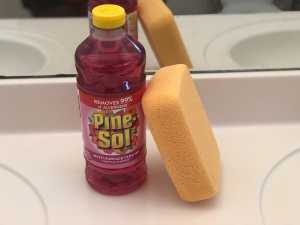 When it was first invented back in 1929, Pine-Sol included pine oil as a main ingredient. The pine oil was harvested from the stumps of yellow pine trees, which were viewed as useless until Harry A. Cole developed his new detergent.
When it was first invented back in 1929, Pine-Sol included pine oil as a main ingredient. The pine oil was harvested from the stumps of yellow pine trees, which were viewed as useless until Harry A. Cole developed his new detergent.
However, since 2016, the Pine-Sol sold in stores doesn’t contain any pine oil at all. This ingredient was mostly eliminated to reduce cost and increase profits and now remains in the product merely for the scent quality. Today, Pine-Sol is manufactured and distributed by the Clorox Company.
What Is Bleach?
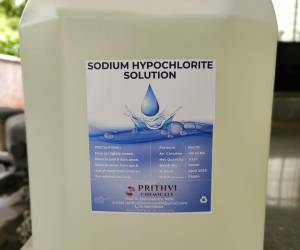 Bleach is a solution consisting of sodium hypochlorite. Sometimes the term “bleach” is used generally for strong chemicals that effectively cleanse, disinfect, and remove stains. But specifically, it’s a chemical with chlorine as the active agent in most solutions. Since pure chlorine is extremely toxic and corrosive in its gaseous form, hypochlorite is more commonly used, since its liquid form is a bit less toxic.
Bleach is a solution consisting of sodium hypochlorite. Sometimes the term “bleach” is used generally for strong chemicals that effectively cleanse, disinfect, and remove stains. But specifically, it’s a chemical with chlorine as the active agent in most solutions. Since pure chlorine is extremely toxic and corrosive in its gaseous form, hypochlorite is more commonly used, since its liquid form is a bit less toxic.
Bleach tends to react with organic substances, so if you use it on leather, cloth, and other natural fibrous materials, it is likely to break down colors or damage fibers. That’s why you’ll notice pale “bleached” spots if bleach happens to splatter or spray on these products.
Diluting Bleach with Water
Working with straight, undiluted bleach can be dangerous. Over a fairly short time, the fumes from the undiluted bleach can cause respiratory irritation and skin irritation. That’s why many people prefer to follow a dilution protocol, adding some water to the bleach to make it a little weaker.
Don’t add hot water to bleach. Doing so can result in the release of harmful chlorine gases. Instead, use lukewarm, cool, or cold water. If you’re simply using the bleach within your home for cleaning purposes, try a 1:100 ratio, which comes out to about two teaspoons of bleach for every gallon of water.
Mixing Bleach and Pine-Sol
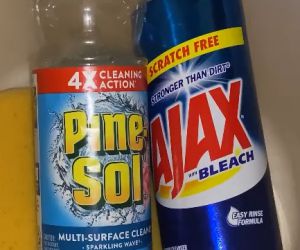 Let’s take a closer look at what can happen when these two types of products are introduced to each other.
Let’s take a closer look at what can happen when these two types of products are introduced to each other.
As we have discussed, bleach isn’t pure liquid chlorine; it’s actually a sodium hypochlorite solution. The exact composition of Pine-Sol is a trade secret, guarded closely by Clorox, but one can assume that it contains acids or alcohols that will react negatively with bleach, producing chlorine gas or chloroform.
Some experts suspect that the problematic component within Pine-Sol (and the reason its warning label recommends not mixing it with bleach) could be glycolic acid.
When blended with products that contain glycolic acid, bleach begins a chemical reaction, which releases hazardous chlorine gas. Some levels of chlorine gas can be released into the air even if you’re not mixing large quantities of the products together. You may have simply cleaned a surface with bleach and then gone over it again with Pine-Sol.
Can that cause a negative and toxic reaction? Absolutely it can, which is why you should take precautions and rinse the surface between product application. Open windows and ensure proper ventilation as well. Chlorine gas in low concentrations will irritate your mucous membranes (nose and mouth) and cause your eyes to burn and water. You will probably feel dizzy or woozy as well. If you are exposed to more concentrated forms of chlorine gas, you might experience chest pain, lung pain, difficulty breathing, fluid in your lungs, or vomiting.
If you suspect that you may have inadvertently mixed bleach with Pine-Sol, immediately open windows, turn on fans, and remove yourself to fresh air, especially if you have begun to feel dizzy or if your eyes and lungs are burning. After letting the air wash through the space for a while, cover your nose and mouth with a mask and return briefly to rinse the affected surfaces thoroughly with cool or warm water.
If the combination of products is significant, such as a bowl full of the solution or a bucket full of it, check online for safe disposal instructions, or simply flush the solution down a sink, toilet, or drain and run lots of water down after it to dilute the toxic chemicals.
Cleaning Products You Should Not EVER Mix
If you’re concerned about the safety of certain chemical combinations, check out this list of some products you should NEVER try to mix. Putting some of these substances together will at best cause you respiratory distress, and at worst, might make an explosion.
Vinegar and Bleach
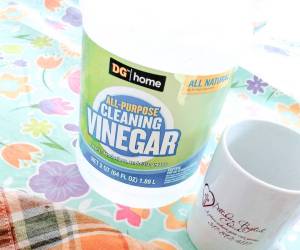 Do not mix bleach with vinegar. Despite the wonderful cleaning properties that each substance possesses separately, when combined they create chlorine gas. Chlorine gas is harmful to humans.
Do not mix bleach with vinegar. Despite the wonderful cleaning properties that each substance possesses separately, when combined they create chlorine gas. Chlorine gas is harmful to humans.
In lower amounts, chlorine gas will irritate your eyes and your skin. You’ll feel irritation within your nasal passages and your lungs. Bronchial irritation will occur, causing you to cough, have trouble breathing, and possibly also grow dizzy. You might experience a headache and nausea as well.
If you’re exposed to chlorine gas resulting from mixing bleach and vinegar, and the concentration of the gas is high enough, you can immediately get pneumonia from the gas entering your lungs. This can result in loss of consciousness and even death. So it’s safe to say that you should never, ever experiment with using these two products together.
Bleach and Ammonia
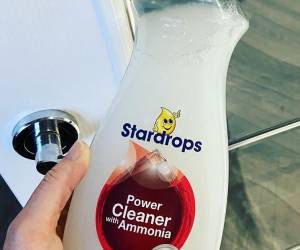 Similar to mixing vinegar and bleach, you should never mix bleach and ammonia together, or you will be exposed to the resulting chlorine gases, which can be very dangerous. Highly concentrated chlorine gas is similar in its debilitating effects to the mustard gas used on troops during World Wars I and II. That comparison should let you know just how dangerous the effects can be. It’s nothing to mess around with.
Similar to mixing vinegar and bleach, you should never mix bleach and ammonia together, or you will be exposed to the resulting chlorine gases, which can be very dangerous. Highly concentrated chlorine gas is similar in its debilitating effects to the mustard gas used on troops during World Wars I and II. That comparison should let you know just how dangerous the effects can be. It’s nothing to mess around with.
If you have disinfected an area of your home or business with bleach, do not then use a type of soap containing ammonia right on top of that bleach-cleaned surface. You must rinse thoroughly after the bleach before using any substance that may have ammonia in it.
Baking Soda and Vinegar
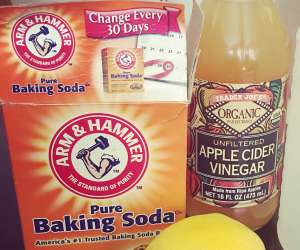 There are a number of DIY cleaning recipes that call for combinations of vinegar and baking soda. Vinegar is the acid component of the mixture, and baking soda is basic rather than acidic. When you blend them, you will get a foamy mixture of sodium acetate and water. If you have the blend in a closed container, the pressure could grow too great, and the vinegar and baking soda combination might explode out of the container, potentially causing injury.
There are a number of DIY cleaning recipes that call for combinations of vinegar and baking soda. Vinegar is the acid component of the mixture, and baking soda is basic rather than acidic. When you blend them, you will get a foamy mixture of sodium acetate and water. If you have the blend in a closed container, the pressure could grow too great, and the vinegar and baking soda combination might explode out of the container, potentially causing injury.
Safety Recap
Essentially, you shouldn’t mix bleach with anything, just to be on the safe side. If you combine it with ammonia, you will be exposed to the release of chloramines via gas, whose effects can range from mild irritation to sudden pneumonia and death. Don’t mix bleach with vinegar, since the acetic acid produces a similar reaction, yielding harmful chlorine gas.
Lemon juice has citric acid and will also react negatively with bleach. Avoid combining bleach with hydrogen peroxide, insecticide, windows cleaners, dishwasher detergent, oven cleaner, or toilet bowl cleaner. If you combine bleach with ethyl alcohol or isopropyl alcohol, or with solutions or products that contain those substances, the reaction will produce chloroform, which in low doses causes dizziness, and in higher concentrations, can cause unconsciousness or even death.
Safety Protocols for Working with Chemicals
No matter what type of cleaning products you are dealing with, it is important to adhere to basic safety precautions. Leave lots of windows open, run a fan or air conditioner or an air purifier, and ensure that there is plenty of good ventilation. Proper ventilation prevents the slow buildup of harmful, toxic fumes due to the presence of strong cleaning products or mixtures of those products.
In some cases, you may need to wear a mouth filter or light breathing mask to protect your lungs, safety goggles to protect your eyes, and gloves to keep the skin of your hands from becoming irritated.
Most bottles or containers of cleaning products and other chemicals will have caution labels, detailing any potential side effects and including some recommendations for the safe use and application of the products. Be sure you read all of this information carefully before you begin working with a chemical in your home or at your place of business.
- Is a Hot Water Heater In the Attic a Good or Bad Idea? - July 18, 2021
- Lawn Mower Starts Then Dies – Here’s the Fix! - June 21, 2021
- Can You Mix Pine-Sol and Bleach? - September 9, 2020

Emma
Sunday 6th of March 2022
I used bleach (undiluted) to clean my bathtub. Just poured it down… I rinsed the bleach away with the shower head for about 30 seconds. Then I poured Pine Sol (undiluted) in the tub, and rinsed for about 30 sec again. I thought I was being safe (although I should have diluted them) yet my nose still burns and I have a headache. Should I be concerned?
Tee
Saturday 13th of August 2022
@Emma, bleach stays on the surface for a long time. How long has your head been hurting you for?